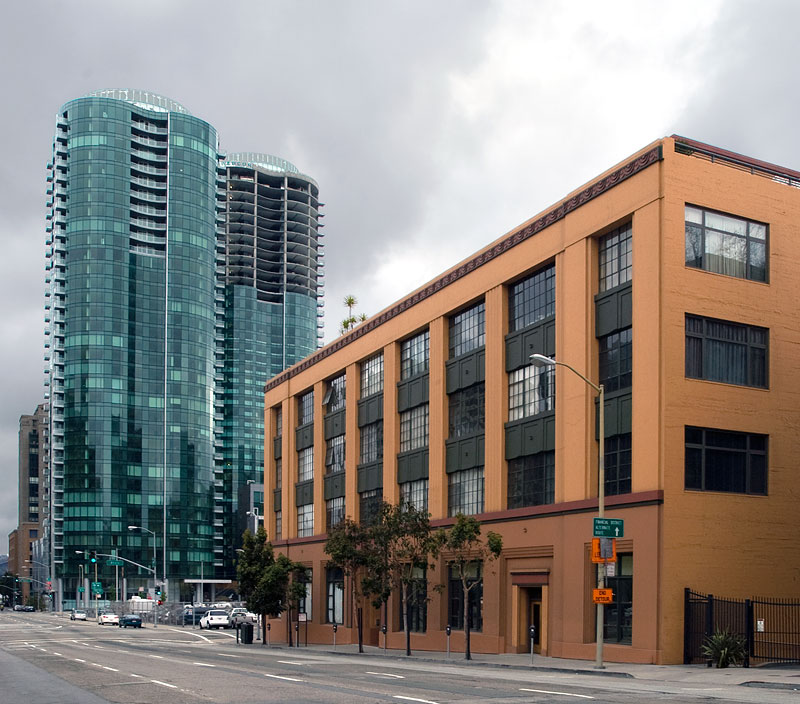National Register of Historic Places in San Francisco
Coffin-Redington Building
301 Folsom Street and 300 Beale Street
Built 1937
The Coffin-Redington Drug Company, founded in 1849, was the first and oldest pharmaceutical company in the west. It was also the first wholesale drug house in San Francisco, and by 1870, it was larger than all similar firms combined in California or San Francisco.
The Coffin-Redington Building was constructed in 1936-1937, almost a century later, to house the company's headquarters, laboratory, manufactury, warehousing, and shipping.
The location was chosen because of its proximity to the new San Francisco-Oakland Bay Bridge completed in 1936. The company's previous headquarters was demolished to make way for construction of the Transbay Terminal, a new transit center connected to the bridge by a series of looping ramps to facilitate speedy loading and unloading of commuter trains and buses.
The new site was also close to the Beltline Railway along the San Francisco waterfront and the vast
railroad network provided by Southern Pacific, owners of much of the land east of the Coffin-Redington property.
Adapted from the NRHP Nomination Form

Much has changed South of Market.
As noted in the NRHP nomination form, the previous Coffin-Redington Building had been demolished to make way for the Transbay Terminal. The Transbay Terminal, in turn, was demolished in 2011 to make way for a new transit hub.
Trains stopped running across the Bay Bridge in 1958 to accommodate increased automobile traffic. The new transit hub will include high speed rail to Los Angeles unless the usual Luddites on the right and left are successful in their attempts to derail this project.
Southern Pacific ceased to exist in 1996. The vast Southern Pacific railyard which covered 303 acres is now Mission Bay home to the California Institute for Regenerative Medicine, UCSF Mission Bay, and other high-tech firms.
The old warehouses and manufacturies are now condominiums or software manufacturies.

The architecturally distinguished but understated Coffin-Redington Building was designed by Frederick H. Meyer, one of San Francisco's most significant and prolific architects of the late 19th and early 20th centuries. When new, it was a state-of-the-art pharmaceutical headquarters.
The Moderne detailing of an otherwise Classical Revival industrial building reflects the fashion of the day, but Moderne is not a style generally associated with Meyer.
Although Meyer designed several other manufacturing plants, now demolished, he is primarily associated with downtown office buildings, government commissions, and residential work for repeat clients.

